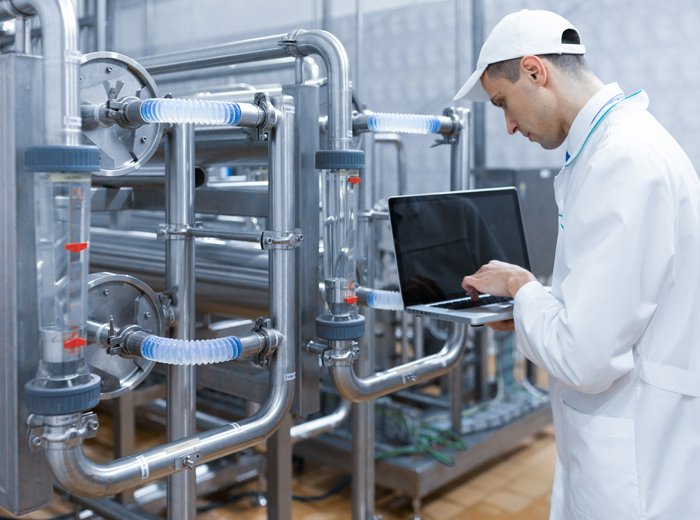Piping System Design for Energy Saving in Pump
973 Views |

ระบบท่อส่งของเหลวเป็นหนึ่งในระบบทางวิศวกรรมที่สำคัญในอุตสาหกรรมอาหาร ซึ่งต้องมีการส่งของเหลวหลากหลายประเภท ทั้งระบบที่ใช้ส่งของเหลวจากต้นทางไปยังปลายทางเพียงอย่างเดียว (ไม่มีท่อส่งกลับ) และระบบที่ทำหน้าที่หมุนเวียนของไหล (แบบไป-กลับ) โดยทุกระบบต้องใช้พลังงาน เพื่อขับเคลื่อนของไหลไปยังจุดหมายปลายทางด้วยอัตราการไหลที่สม่ำเสมอ ซึ่งโดยปกติแล้ว ระบบท่อจะถูกออกแบบเผื่อไว้ ดังนั้น
การควบคุมปรับลดอัตราการไหลด้วยแนวทางที่เหมาะสม จึงเป็นตัวช่วยในการลดต้นทุนด้านพลังงาน
ลงได้อย่างมาก
Piping systems are parts of important engineering systems in the food industry. The systems involve the transmission of various kinds of fluids, either in open forms (from one point to others, no return) or for circulation purposes (supply-return). Energy is required to transmit fluid to the destination at the preferred flow rate. In most cases, the piping systems are over-design, which gives some margin for flowrate control. Reduction of flowrate with proper methods to suit process requirements could significantly lower energy costs.
ในช่วงเริ่มต้นของการออกแบบโรงงาน ผู้ออกแบบระบบท่อส่งของเหลวจะรวบรวมข้อมูลความต้องการของผู้ใช้งานปลายทาง เช่น ชนิดของของเหลว อุณหภูมิ ความดัน และอัตราการไหล ที่ต้องการตามจุดต่างๆ ภายในโรงงาน เพื่อนำมาใช้เป็นเป้าหมายในการออกแบบระบบ รวมถึงพิจารณาตำแหน่งที่ตั้งของห้องเครื่อง และ
ที่เก็บของเหลวซึ่งถือเป็นต้นทาง โดยการออกแบบระบบท่อเป็นการเชื่อมระหว่างต้นทางกับปลายทาง
ซึ่งผู้ออกแบบต้องเลือกวัสดุของท่อให้มีความเหมาะสมกับของเหลว และสอดคล้องกับมาตรฐานที่เกี่ยวข้อง เพื่อทำการออกแบบเส้นทางให้ท่ออย่างเหมาะสมในแบบสถาปัตยกรรมของโรงงาน ตลอดจนตรวจสอบเส้นทางวิกฤติ และทำการคำนวณเลือกขนาดเส้นผ่านศูนย์กลางของท่อส่วนต่างๆ ให้เหมาะสม เพื่อให้มีขนาดใหญ่เพียงพอที่จะรองรับอัตราการไหลที่ต้องการได้ จากนั้น จึงคำนวณความดันต้นทางที่ต้องการ เพื่อใช้ใน
การเลือกปั๊ม ซึ่งการออกแบบระบบนี้จะถูกปรับเปลี่ยนแก้ไขหลายรอบก่อนที่จะสร้างเสร็จเป็นโรงงานที่สามารถทำการผลิตได้
During the factory design stage, piping system designers will gather end-user requirements for each piping system, such as type of fluid, temperature, pressure, and flow rate at each destination. The requirements become the design goal. Locations of the source, for example, machine room and/or the storage tanks, are then considered. The piping system is then designed to connect the source to the destinations. Designers will choose the pipe material to suit the fluid and conform to related industrial codes, then lay out the pipelines on the architectural drawing of the factory, identify the critical path, and size each pipe section according to the required flowrate. The required pressure is then computed in order to select suitable a pump(s). The design could be revised multiple times during the course of a project until the factory is up and running.



